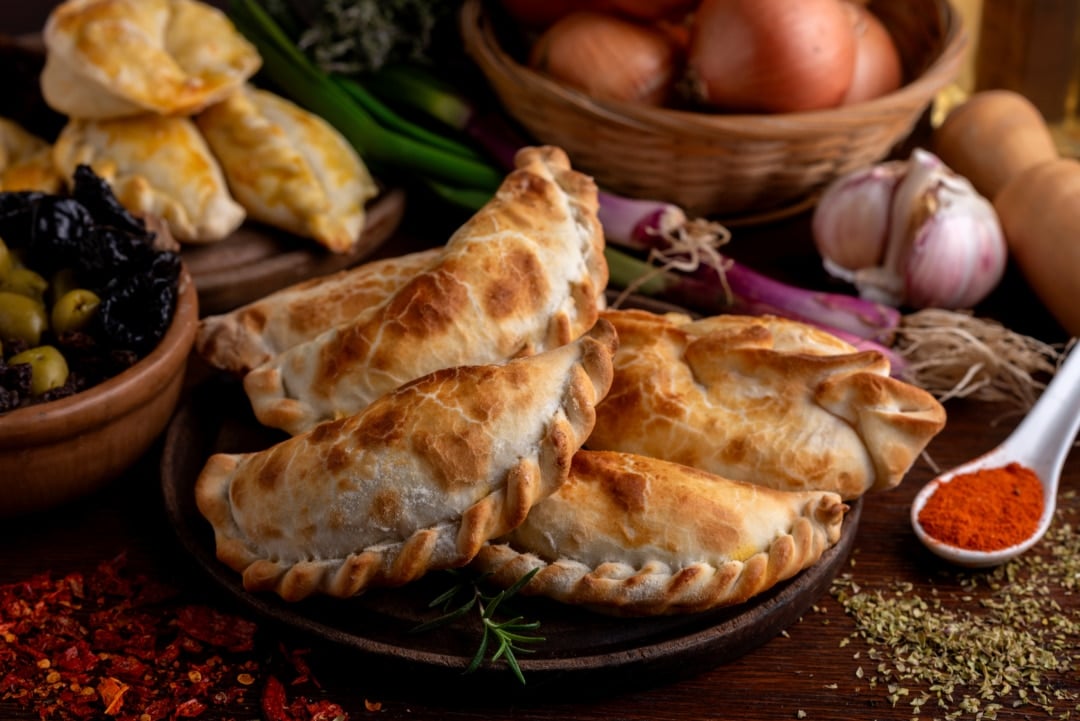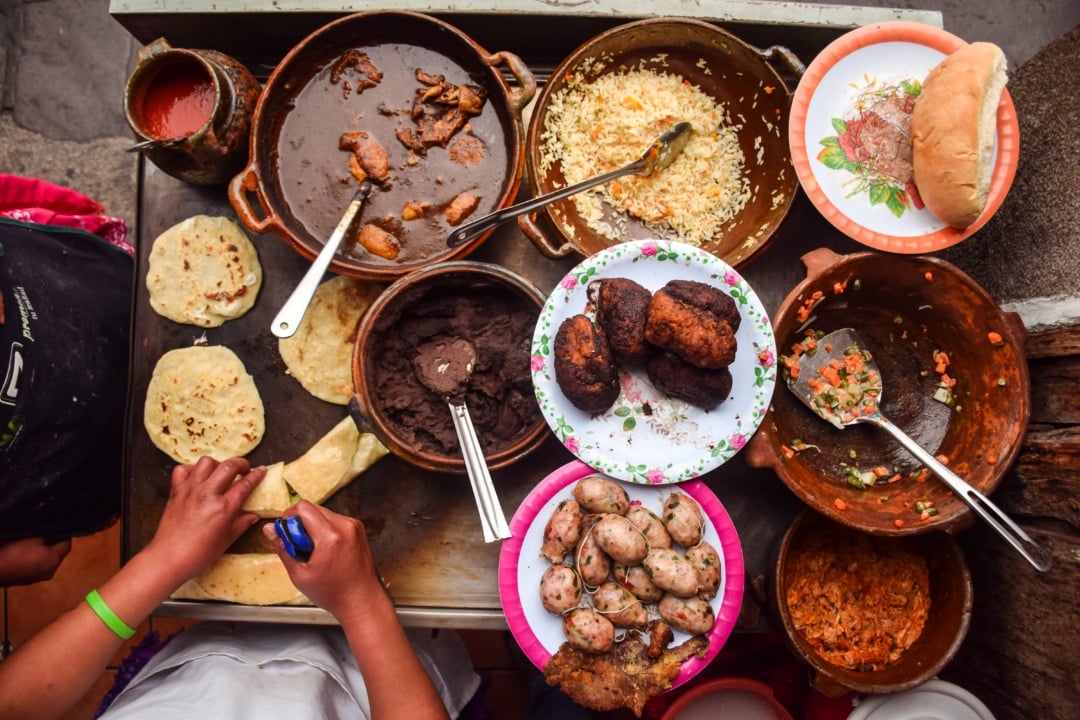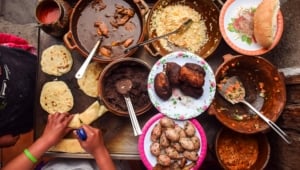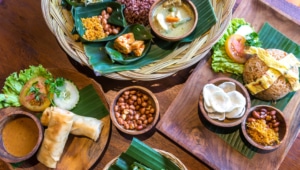French Food: 23 Popular Dishes + 3 Secret Tips

The French values of liberty and tradition are integral to their culinary mastery and iconic recipes that have boomed in popularity throughout the years. They’re known for their liberal use of flavor and rich ingredients, adherence to tradition, and going beyond what’s expected of them.
For these reasons, French cuisine has drawn plenty of interested cooks and chefs who seek to master their craft and perfect their creations. And yet, for all of its seeming complexity, there’s actually a poetic sense of simplicity that underpins the entire language of flavors that capture the true French spirit.
So, you’re interested in French food and would love to explore it more to weave it into your own cooking. Well, you’ve come to the right place. While this article won’t make you an expert at cooking French food, it’ll nevertheless give you a good grasp of the basics, including:
- Traditional French cuisine and how it spread its influence around the globe
- Famous dishes to try and sample to gain insight into the principles and philosophy of French cuisine
- Regional specialties and essential ingredients that one needs for their French-inspired kitchen
- Proper dining etiquette so you get to eat à la Française.
Ready your nose and tongue for an explosion of flavors because we’ll be diving deep into all things French.
Traditional French Cuisine — More than Croissants and Baguettes
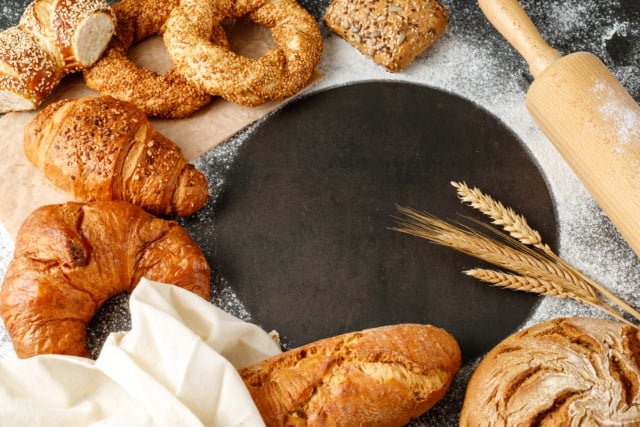
Traditional French Cuisine — More than Croissants and Baguettes
Back in Medieval times, French tables were unevenly laden. While the peasant diet consisted of mainly legumes and grains, the nobility indulged in enormous feasts that included the richest ingredients available. This richness, as well as immaculate presentation and use of spices, was key to showcasing a family’s status in society.
Attention to presentation is still of key importance today, with the balance of color and composition being a prime consideration. Many of our French favorites, however, such as French onion soup, come from the creativity of peasants who had little to work with.
This dish, in particular, involves about five key ingredients, give or take some herbs and extra touches. These key ingredients — onions, bread, butter, cheese, and water — were cheap and easily accessible all year round.
Simple dishes such as this run deep through the culture and are still enjoyed today. However, it’s French haute cuisine — translated simply as high cuisine — that has strongly boosted the fame of the French culinary scene.
This newer culinary style focuses on the use of very fine ingredients and highly trained chefs to deliver quality over quantity. Dining on haute cuisine tends to involve a degustation of small but wondrous creations.
French cuisine goes beyond the food itself and extends to the rituals that surround it. A meal is not to be rushed through, but savored, shared, and thoroughly enjoyed. Respecting food involves fully relishing its flavors and paying attention to all the details that contribute to such a harmonious whole. It is central to the French way of life and is, in fact, sacred.
French Food in the World
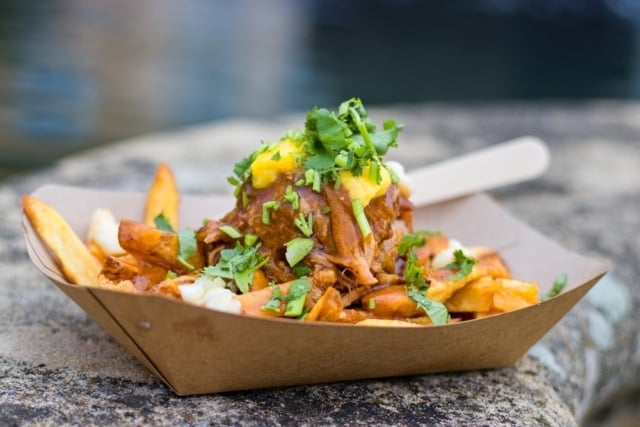
French Food in the World
French cuisine is famed around the world, with many chefs-in-training traveling to France to learn from the culinary world’s finest. As a testament to such prestige, Le Cordon Bleu is one of the many culinary schools in Paris that welcomes aspiring young chefs into their training kitchens.
This institute in particular trains around 1,000 students a year, just in Paris. Beyond that, Le Cordon Bleu has branched out to establish 35 institutes in 20 countries around the world.
With French colonization between the 16th and 19th centuries, there came the explosion of French cuisine onto the scene of other continents. Vietnam is an example of the finest cultural fusion in cuisine. Bánh mì and phò are just two of the many Vietnamese staple dishes heavily influenced by French cuisine.
Bánh mì is a baguette sandwich containing frilled meat, pâté, crunchy pickled vegetables, and fresh coriander. Bread is a rare feature of cuisine elsewhere in Asia, but you won’t find the French without a baguette close at hand.
Baguettes are one of the items the French brought to Vietnam that revolutionized their cuisine. Though, as with most of these new items, the Vietnamese put their own spin on it. Vietnamese baguettes came to be made with rice flour, rather than wheat, producing a quite different texture to that of its French cousin.
In North America, you can also find sprinklings of French influence in cuisine. Quebec, Canada, and New Orleans, USA, are both examples of this. Canada was claimed by the French as a part of New France in 1535, while New Orleans was claimed later in 1718, named after the French Duke of Orléans.
One of the most famous Québécois dishes is the Poutine — French fries smothered in gravy and cheese curds. This is a rich, decadent dish incorporating classic elements of French cuisine. Meanwhile, the Louisiana classic — gumbo stew — is born from a blend of different cultural cuisines, including French, African, Native American, and Spanish. It is French in its resemblance to the bouillabaisse stew with its use of meat stock, seafood, bell peppers, onions, and similar herbs and spices.
Famous French Dishes You Have to Try

Famous French Dishes You Have to Try
There are a great number of dishes that make up traditional French cuisine. Here are a few that you shouldn’t miss if you want to truly understand the flavors and styles of French cuisine.
French dining involves multiple courses to be enjoyed in one sitting. As you read through this list, imagine the experience of dining on a combination of these dishes in succession. Mealtimes are long, as to allow for pauses between courses.
Soups & Salads
To the French, soups are a mealtime staple that allow French regional specialties to really shine through. Because France has a varied terrain, different regions put the spotlight on different main ingredients according to the season. For the uninitiated and those who are simply starting out on the exploration, here are famous French soups and salads you should try.
French Onion Soup

French Onion Soup
This French staple is one of the most popular and iconic dishes of the cuisine. Consuming a serving of French onion soup conjures feelings of warmth and basic simplicity that work with any occasion. This dish is also versatile and can be made even simpler without butter and cheese or made more gourmet with herbes de Provence and white wine.
Potage Saint-Germain

Potage Saint-Germain
This classical soup dates back to the 18th century and is best known for its characteristically thick, green broth. The color owes itself to split green peas, the soup’s key ingredient, which works in tandem with leeks, potatoes, and carrots. Topping off the soup are croutons or a serving of braised pork belly.
Vichyssoise

Vichyssoise
A thick soup made from potato, leek, cream, and chicken stock, and is known for its iconic white color. This dish is traditionally served chilled and garnished with finely diced chives. If you want to fully appreciate the range of flavors that this soup brings, consider pairing it with focaccia, grilled shrimp, or gruyere twists.
Starters, Sandwiches, Sides
The rich culinary landscape that the French have built through centuries of cultural and historical influences is evident when you look at the various starters, sandwiches, and sides they have. These dishes are great for complementing an entire full-course meal, but they’re also capable of holding their ground when consumed by themselves. Here are some of the best French dishes in this category.
Croque-Monsieur

Croque-Monsieur
Simply translated to “crunchy mister”, the bread of this hot sandwich is dipped in egg so that the bread crisps up as it is toasted in the oven. Inside the sandwich are ham, gruyere, parmesan, and béchamel sauce. There’s also such a thing as a croque-madame, which is differentiated by the feature of a fried egg on top.
Pan Bagnat

Pan Bagnat
A specialty of Nice, the pan bagnat is a simple salad and hardboiled egg sandwich, similar to any sandwich you might find around the world. Traditionally, pain de campagne is used for the base, which is a whole wheat bread bun. It also contains either tuna or anchovies.
Escargots de Bourgogne

Escargots de Bourgogne
When the rain sets in during autumn in the Burgundy region, it’s prime time to harvest snails from the area’s many vineyards. For this dish, the escargots are simply baked with some butter mixed with crushed garlic, parsley, shallots, and a splash of white wine. A side serving of bread is, of course, a must.
Salad Niçoise

Salad Niçoise
This is a very simple salad that’s perfect as a side dish or, served in a larger portion, as a very healthy meal. Cos lettuce, tomato, green beans, and olives are the fresh ingredients. Boiled baby potatoes and either tuna or anchovies bring carbohydrates and fatty acids to the balance. To finish, drizzle a simple vinaigrette of mustard, oil, and vinegar. Niçoise refers to the dish’s origin in Nice.
Pommes Frites

Pommes Frites
A dish we all know and love — the original french fries. These have been popularized around the world by a chain you may have heard of — McDonald’s.
The origin of these slender delights is actually disputed between France and Belgium. While you might be used to accompanying your fries with some tomato ketchup, mayonnaise is the preferred condiment in France.
Ratatouille

Ratatouille
This is a classic Provençal dish of stewed tomato, zucchini, bell pepper, and eggplants. It also requires onions, garlic, herbes de Provence, and a whole lot of olive oil. This specialty is best served with rice, pasta, or baguette.
Mains
If you think the French have pulled out all the stops with their soups, starters, and sandwiches, just wait until you explore the mains that the French have developed and perfected.
True to its name, the main dish is the highlight of the entire culinary experience and strives to deliver the best flavorful delights that work in tandem with other aspects of the meal. The following are only some of the French main dishes that you should try.
Coq au vin

Coq au vin
The star of this dish is slowly braised chicken simmered in a sauce of red wine and a small amount of brandy. The sauce is also flavored with classic French vegetables such as carrots, mushrooms, tomatoes, and onions, with thyme, parsley, and bay leaves used liberally to season.
The final, but very important touch, is the diced pancetta mixed through the dish. Croutons are an optional, but highly recommended, addition.
Bouillabaisse

Bouillabaisse
Originating from the port city of Marseille, this stew showcases the fine seafood of the Cote d’Azur. Tomatoes, onions, zucchini, and bell peppers are the vegetable components of this dish. It also requires a healthy dose of garlic, olive oil, parsley, and saffron. For the broth, utilize trimmings such as seashells to fortify the flavor of the sea.
Quiche Lorraine

Quiche Lorraine
The classic French tart is filled with a cream-and-egg-based sauce and lardons of bacon. When baked, this filling solidifies so that the tart may be served in slices, hot or cold, and traditionally with a side of green salad. You can prepare the ingredients beforehand and assemble them into the tart immediately before baking.
Beef Bourguignon

Beef Bourguignon
This is a stew of carrots, onions, garlic, and the main star: beef. The meat is chopped into large chunks and stewed with the vegetables — first on the stove before being moved to the oven. Now, for the Bourguignon (Burgundy) part of the dish, ingredients should be stewed in no less than two bottles of the region’s red wine.
Bread, Pastries, Dessert
The French are well-known for how much bread features in their cuisine. As an example, many people love to meme about the baguette, but this vastly oversimplifies the complexities of the role that pastry plays in daily French meals. In this culture, pastries, baked goods, and desserts can sometimes be the centerpiece that holds everything together.
Crème brûlée

Crème brûlée
This is a baked custard dessert with a crispy thin layer of caramelized sugar. The sugary top of this dessert should only be hardened with a flame torch immediately before serving to save it from softening over time. The key to the dish is that initial crack as you plunge your spoon through the sugar crisp.
Tarte Tatin

Tarte Tatin
Named after its creators, the Tatin sisters, this upside-down, baked apple tart is simply to die for. Apples are caramelized in sugar and butter before being baked inside a rich, buttery, and slightly salted pastry. This one-of-a-kind treat will leave a tangy sensation that’ll keep you coming back for more.
Macarons

Macarons
Made essentially with almond flour and egg whites, macarons are a delectable treat that can be found at any respectable boulangerie. Crispy on the outside, chewy in the middle, and filled with a soft cream, macarons are a taste sensation. Cute pastel colors reflect the flavor waiting for you inside, whether that’s raspberry, pistachio, caramel, or other less common flavors.
Madeleines

Madeleines
These desserts are small buttery sponges flavored with vanilla and citrus zest. Their small size and adorable seashell shape make them the perfect treat for dipping into a cup of coffee or hot chocolate. Madeleines come from the Lorraine region of northeastern France but are popular throughout the country and beyond.
Mille-Feuille

Mille-Feuille
Mille-Feuille is a classic French dessert that features layers of puff pastry stacked between layers of crème pâtissière that meld together to construct this mouth-watering pasty. It’s light as a feather but filled with a buttery, creamy richness that leaves hints of vanilla all over the tongue. Atop this treat lies a generous serving of chocolate that keeps everything sweet and decadent.
3 Secret Tips and Dishes
French culinary skills are an art form to be learned over years of training, but while mastery of the essential staples requires slow and methodical progress, there are several things you can do to quickly spice up your French dishes. In some cases, it’s as simple as knowing what sides and fillers work best with the dish you have in mind. To help you out, here are three lesser-known hints and recipes to help you on your French-style home cooking journey.
Brandade de Morue

Brandade de Morue
An emulsion of salt cod (Morue), potatoes, and olive oil create a silky and flavorsome concoction. This is excellent as a side with a dish like ratatouille, or as a dip to pair with a crispy baguette and some olives. If you’re preparing this, make sure to also serve a glass of dry white wine to fully complement the flavors.
Andouillette

Andouillette
Andouillette is an interesting, coarse-texture sausage made from the large intestine of pork that has sadly received its unfair share of disgusted remarks. Onions, wine, pepper, and herbs are added to perfect the flavor of this cured meat treat, but this combination is also partly responsible for andouillette’s rather pungent scent. As a tribute to French culture and heritage, serve andouillette on a charcuterie board with baguette, tapenade, and olives.
Gratin de Crozets

Gratin de Crozets
This is a creamy, cheesy, baked dish made with the unique Crozet — a flat, square-shaped pasta of the Savoie region. Aside from the pasta, the recipe requires stock, cream, herbs, and importantly, tomme de Savoie cheese. This all gets baked in the oven to create a crispy golden masterpiece. Tip: add some nutmeg, a French favorite, to the sauce for a sweet and nutty hint.
Regional Specialties
France is a large, expansive nation. Each region’s history is different, a fact that’s reflected by their unique cuisines. In this section, we’ll look at some of the specialties of just a few great regions. Note how these unique regional cuisines tell us about the colorful history of the land. After all, the culinary influence of bordering countries is not just due to proximity, but also due to a tumultuous history of oscillating control between powers.
Brittany

Brittany
The northwestern tip of France extends to a peninsula jutting into the Atlantic — Brittany. Its long coastline and special location have made it a melting pot of diverse cultures and, in turn, diverse cuisines. This region is one of France’s most important agricultural areas, and it’s for this reason that the regional specialties we’ll be talking about are derived from the fields of Brittany.
Crepes

Crepes
The French equivalent to a pancake (but thinner and perhaps more versatile), the crepe is a wonderful thing. Its creation is said to have been a happy accident when one day, a woman of 13th-century Brittany spilled some buckwheat porridge mix onto a hot hearthstone. Crepes can be enjoyed as a savory or sweet delight, depending on the filling you choose to put inside. Strawberries and chocolate are particularly popular options.
Galettes

Galettes
Galettes come in a variety of forms, but they all typically include some sort of filling. The traditional galette is best described as a cake that plays well with virtually any fruit you might have. Meanwhile, the Breton galette is made up of a thin buckwheat pastry resembling a crepe that encases a savory filling, such as an egg or pancetta.
Provence

Provence
Situated on the southeastern edge of France and bordering the rich Mediterranean, Provence is unsurprisingly a region rich in all things seafood. That aside, Provence is also steeped in history as it is home to both wine traditions that date back several millennia ago and some of France’s oldest towns. The region is also a popular tourist destination thanks to its climate and scenic coastlines.
Tapenade

Tapenade
A classic Provençal spread to be had with a crusty baguette and is grilled with olive oil and herbs. Tapenade consists of black olives, capers, and anchovies. The name is derived from the Provençal “tapenas”, for capers, emphasizing the importance of that ingredient. Sure, they’re small, but their flavor is anything but.
Bouillabaisse with seafood

Bouillabaisse with seafood
The bouillabaisse with seafood is a classic that ought not to be missed when visiting the city of Marseille. Its hometown knows how to do it best, especially because Marseille is a port city that has easy access to the freshest key ingredients. Take a spoonful of this soup and be acquainted with the flavors of the sea tempered by tradition and a long history.
Alsace

Alsace
Far away from the sea lies Alsace, a region in northeastern France that borders Germany. This quaint region is known for its wines and, as influenced by its neighbor, the fact that it brews beer. Because of its heritage, it’s unsurprising that Alsace features cuisine derived from both the French and the Germans.
Tarte Flambee

Tarte Flambee
Originally meant to salvage dough scraps, this Alsatian flatbread has since grown in popularity and has become one of the most iconic foods of the region. Tarte flambee is crispy and ever so thin, with generous sprinklings of cheese and lardons of bacon. However, it gets better — this dish also involves a layer of seasoned creme fraiche and crispy diced onions.
Choucroute Garnie

Choucroute Garnie
This dish is a real insight into the history and tradition of the Alsatian region. Choucroute garnie tells the story of the area’s remaining German influence and the history of alternating control between the countries upon whose borders this region exists. Sausage and sauerkraut are the main events of this charcuterie classic, which is typically consumed during winter.
Beverages
Perhaps equal to its status as the cuisine capital of the world, France is also historically celebrated for its wine. The country fosters conditions that are perfect for viticulture and has a range of climates suitable for different and unique varieties of grapes. However, we mustn’t overlook France’s talent for producing brandy, either. Here, we’ll explore several of France’s best drops.
Wine

Wine
You know you’ll never go wrong with French wine, especially considering that one of its cities — Bordeaux — has been literally hailed as the wine capital of the world. The rich soil of the country is ideal for experimenting with all sorts of ingredients and creating different beverages that go on to capture the hearts of people all over the world. Chances are you’ve already had a taste of any one of the following wines.
Bordeaux
A great proportion of Bordeaux’s wine is red. The most common products are Merlot, Cabernet Franc, and Cabernet Sauvignon. As you enjoy these wines, pay attention to the prevailing flavors of the drink such as graphite and cedar.
Burgundy
Chardonnay and Pinot Noir grow well in the undulating terrain of Burgundy in eastern France. Both red and white wines of the region tend to be of a drier quality. As such, these are a perfect pair for red meats (for red wine) or light fish and vegetables (for white wine).
Champagne
There are five distinct districts of wine production within the region. Legal restrictions are firmly in place due to the world-renowned title of Champagne. Chardonnay, Pinot Noir, and Pinto Meunier are all common to the region.
Chateuneuf-du-Pape
Over 13 different grape varieties are grown within this region. Compared to other regions, Chateuneuf-du-Pape has a considerably low production volume. Because of this, wines of the region tend to be harder to find, increasing both demand and price. The region is best known for its full-bodied red blends that are bold in flavor.
Brandy

Brandy
Perhaps as a consequence of France’s winemaking history, brandy has emerged as a similarly popular beverage of choice. Brandy itself is a spirit distilled from fermented fruit, making it essentially a form of distilled wine. Like its wine counterparts, French brandy also boasts rich flavors and is an excellent choice for those who are looking for something other than wines.
Calvados
In the Normandy region in northwest France, Calvados brandy is produced from sweet and bitter cider apples, as well as pears. The flavor contains subtle hints of nutmeg and apricot and is somewhat floral on the nose. To best appreciate the drink, pair it with seafood and chocolate-based desserts.
Armagnac
Armagnac brandy is hailed as the oldest in the world that’s still distilled today. It originated in the region of its namesake, and today, the Armagnac region is still its home. It’s distilled from a varied blend of grapes and aged in oak barrels, resulting in rich flavors of chocolate and caramel.
Cognac
Named after the commune of Cognac, this brandy is dry and acidic, earning it scathing reviews from many. However, that hasn’t stopped it from becoming one of the most well-known brandies around the world. Copper pots are used for double distillation, and two years of aging must take place in oak barrels from Tronçais or Limousin.
Ingredients
Only the best ingredients are acceptable in any respectable French kitchen. It’s all about full-bodiedness, pungency, and indulgence. Here are some pantry staples for the discerning Francophile home cook. Remember, generosity goes a long way in French cuisine. A good French cook always exceeds a recipe’s recommendation of the following ingredients’ measurements.
Butter

Butter
Not only used to fry, sautee, and braise, but butter is also just as often chucked in liberally just for the sake of indulgence. Sauces and purees are ordinarily heavy in butter content, and a quenelle of butter atop a steak is absolutely essential. French cuisine practically lives and breathes on butter, so stocking up on this ingredient is a good idea.
Cream

Cream (in Pumpkin Soup)
An abundance of rich foods such as cream was key to exhibiting one’s wealth back in the days of nobility feasts. Today, the tradition continues on for flavor’s sake. Why use milk in a bechamel sauce when you could use cream? Self-indulgence is the French way, and it’s something we should all do more of.
Wine

Wine
The French like to cook with wine, and sometimes they even put it in their food. Puns aside, a splash (or bottle) of wine in your broth or stew goes a long way in heightening the flavor of a dish, and beef bourguignon is such a classic example of this. And guess what the French love to pair with their food — you guessed it, it’s also wine.
Cheese

Cheese
This ingredient is not to be skimmed over lightly. We’ll take an in-depth look into the cheeses of France from the soft to the hard, but for now, just make sure you have plenty of cheese to suit all sorts of dishes that the French would love to have you prepare.
Garlic
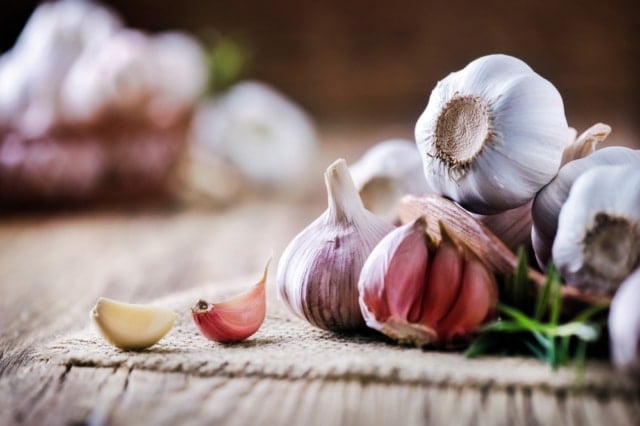
Garlic
The mentality of the best French chefs is that you can never go wrong with adding a few more cloves to your dish than the recipe calls for. Crushed, diced, or chucked in whole, garlic is an essential ingredient to a great many French dishes. This ingredient adds a whole new dimension in terms of scent and taste that sets French cuisine apart from the rest.
Shallots

Shallots
The onion’s sexy cousin, shallots add flavor to a majority of French classics when sauteed with butter and herbs. They can also be pickled and used as a garnish or a nibble in their own right. Don’t shy away from the strong smell and trust that a little more shallot will go a long way.
Baguette

Baguette
These breadsticks are so integral to the French way of life that the government actually regulates dough. Legally, a boulangerie cannot advertise bread from an even slightly divergent dough recipe as a “baguette”. Sizes and prices are also standardized throughout the country.
Cheeses

Cheeses
With baguettes and wine, cheese completes the magical trifecta of French cuisine. The combination of these three ingredients can lift the spirits no matter how dark or tiring one’s day has been. As if that’s not enough of a testament, cheese is the ingredient that got the French through the many trials and tribulations of their history.
Brie

Brie
Named after its region of origin, this cheese is soft and creamy and encased in an edible rind of white mold. It’s made of cow’s milk and its flavor deepens depending on other ingredients used, as well as environmental factors.
Camembert

Camembert
Though it’s often confused with Brie due to their indistinct appearance, Camembert has a lower fat density and a greater flavor profile. This is due to the extensive use of lactic starters throughout the production process.
Roquefort

Roquefort
This is perhaps the most well-regarded blue cheese in the world. Originating and produced in the south of France, this pungent cheese is made from sheep’s milk which creates that sharp flavor that this cheese is known for.
Comté

Comté
The Franche-Comté region borders Switzerland, and so the cuisine is a delicate mix of both countries’ traditions. This is reflected by the mild and vaguely sweet flavor of this alpine cheese and its firm but flexible texture.
Emmental

Emmental
A medium-hard cheese of Switzerland, Emmental is prolifically produced in Brittany and enjoyed widely by the French. This cheese was first produced centuries ago in the Bern Valley and is typically made in huge rounds weighing up to 200 pounds.
Reblochon

Reblochon
This very soft cheese is made from unpasteurized cow’s milk. For that reason, it can’t be sold in countries with strict import standards such as the U.S. The name of this cheese refers to the practice of peasant farmers of only partially milking their cows initially. Milk would then be weighed by landowners to calculate how much they would tax the farmers. Farmers would then covertly collect the leftover richer and tastier milk which they’ll primarily use to produce cheese.
Gruyère

Gruyère
The higher water content in this cheese makes for an easy and even melt, ideal for French classics such as onion soup. Though primarily this cheese is known to be Swiss, it’s also produced in the eastern alpine regions of France, Savoie, and Franche-Comté. Gruyère is a hard cheese with a light brown natural rind.
Herbs and Spices

Herbs and Spices
Spices were another way for the medieval nobility to flaunt their wealth to dinner guests. The peasantry did not have the luxury of cooking with spice, but they could get their hands on herbes de Provence. For this reason, you’ll notice these herbs appearing in a lot of the hearty classics.
Herbes de Provence
The traditional blend is that of thyme, oregano, rosemary, and summer savory. These herbs are beautifully aromatic and grow wildly across Provence, meaning they were accessible to the peasantry in medieval times.
Thyme

Thyme
Indigenous to the Mediterranean, thyme is now known and loved around the world. As an herb for cooking, thyme is used in all sorts of dishes such as stews, seafood, and meats.
Tarragon

Tarragon
This member of the sunflower family pairs well with just about any meat or vegetable dish. It has a subtle flavor of licorice and is known for its medicinal qualities. When it comes to sauces, tarragon is often one of the final touches that elevate the flavor profile.
Parsley

Parsley
Native to Greece, Yugoslavia, and Morocco, this very handy herb now grows wildly across the Mediterranean and beyond. It has long been a staple of French cooking as it is often used to flavor and garnish.
Basil

Basil
Basil is a favorite all over the world and is most loved as a feature of Italian meals in the form of fresh garnish or pesto. It has also been integral to the flavors of French cuisine, particularly in the Mediterranean and Provençal areas.
French Food Culture

French Food Culture
In France, eating is not just done for nutrition’s sake. No, it’s much more than that. The French take long breaks out of their day to sit over their meals, chat, and enjoy a glass of wine. When the food is so good, what other way is there?
Eating Habits

Eating Habits in France
One of the most important ways to show respect for the culinary scene is to observe and follow the eating habits of the people. For the French, there are specific habits that you must pay attention to so you can fully enjoy and relish the experience. French cuisine goes beyond just the food on the table and extends to include the setting as well.
Bread Is a Common Accompaniment. Bread, most commonly in the form of a baguette, is enjoyed at breakfast, lunch, and dinner — in the morning with butter and jam, at lunch as a sandwich or accompaniment to the main, and in the evening as part of a charcuterie arrangement.
Mealtime Is a Social Occasion. The French think of mealtime as something that should be shared with friends and family.
No Rushing, Enjoy the Experience. Rushing through one’s meal, as might be the norm in other countries, is frowned upon in France. For them, food is sacred. Due to this, “doggy bags” were for a long time outlawed as they went against this cultural tradition.
Observing these habits will go a long way toward making sure that you’re consuming and experiencing French cuisine in the way that it’s intended.
Meal Structure

Meal Structure in France
As with many other cultures, French cuisine also follows a specific meal structure. This allows one to slowly and thoroughly savor the flavor of each component and appreciate how they contribute to the whole. Before diving into French cuisine, make sure to first understand the basics of its meal structure.
- Multiple Courses from Savory to Sweet. Generally, mealtime consists of three courses — hors d’œuvre, or entree, before the plat principal and dinner, which will then be followed by a dessert or cheese course. A salad may also be served after the main.
- Aperitif before Meal. This is the sacred hour pre-dinner in which a drink is taken to awaken the taste buds and ready oneself for the meal to come. It would be wrong to go straight from the desk to the dinner table. The aperitif (apéro for short) is a moment to unwind, relax, and socialize after the day’s work.
- Lunch Is Usually the Largest Meal. The French often take a two-hour lunch break. This is why you will find that many shops are closed during certain hours of the afternoon. This break allows for tradition to be carried out and enjoyed even throughout the working week.
While in Rome, you should act like the Romans do, in France, you should also eat as the French do.
Etiquette

Etiquette in France
Of course, there are also certain social norms to observe when eating. Things that you find acceptable in your culture might be frowned upon in other countries. Knowing and grasping the basics of etiquette will help you avoid committing a faux pas and attracting unwanted, embarrassing attention.
- Wait to Be Seated. When entering a restaurant, act as if you’re entering the restaurateur’s home. Wait near the door for someone to greet you. This may require you to search for eye contact and give a polite wave to grab their attention. To initiate things, one can ask, “Peut-on s’asseoir?”, or in English, “Can we sit?”.
- Place Napkin in Lap. Once you’ve been seated, place your napkin over your lap. This is a polite form of etiquette designed to avoid any awkward spillages.
- Bread Is Torn, Not Sliced. After you’ve ordered, the waiter will generally deliver a basket of crunchy bread. There will be small plates already at your table, but you should not place the bread onto them. Simply use the top left corner of the plate to help you break the pieces of bread into bite-sized portions. Slowly nibble at these as your meal may take a while.
